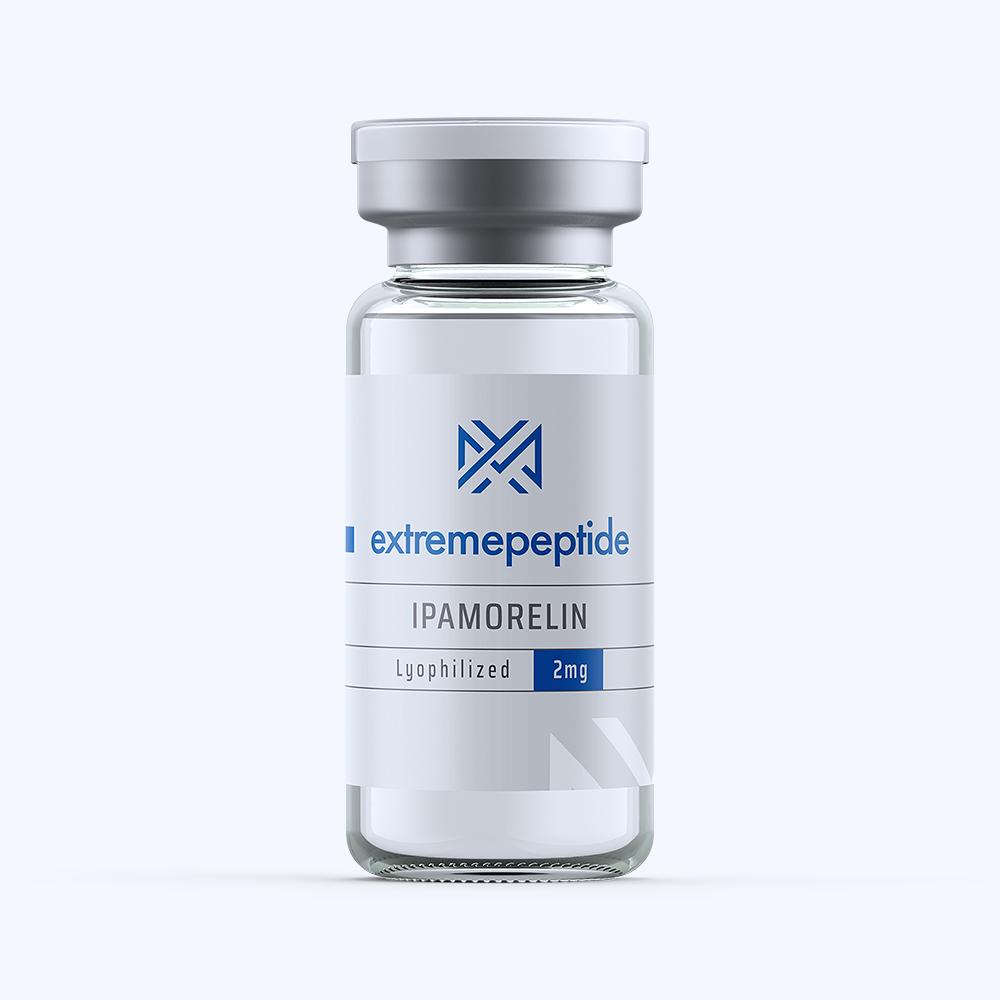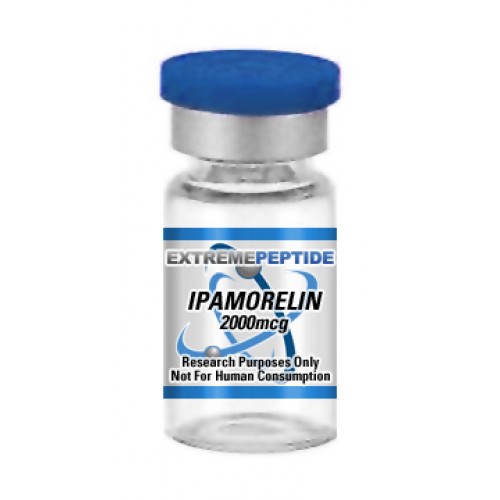
Ipamorelin is a pentipeptide that is considered to be an agonist, meaning that is contains the ability to bind certain receptors of a cell and induces a cellular response. It is also considered to be a secretogogue, meaning that it can play a role in energy homeostasis as well as the regulation and control of body weight in animal test subjects. It occasionally goes by the following alternate names:
- Ipamorelin Acetate
- IPAM
- NNC-26-0161
It contains a molecular mass of 711.85296, and it has a molecular formula of C38H49N9O5.
How Ipamorelin Works
In essence, Ipamorelin’s primary method of functionality and operational mechanics can be linked to the brain and the liver.
In the case of the brain, scientific study based on animal test subjects has been able to determine that its functionality causes a stimulation of the pituitary gland. This is the pea-shaped gland that is located at the bottom of the hypothalamus at the base of the brain whose primary responsibility is to regulate and control several endocrine system-related processes, ranging from growth and metabolism to pain relief and temperature regulation. While Ipamorelin stimulates the secretion of the pituitary gland, it has also shown an ability to block the expression of a secretion called somatostatin. This particular secretion is expressed as a mean to inhibit the release of growth hormone in animal test subjects.
In the case of the liver, scientific study based on animal test subjects has been able to determine that Ipamorelin’s overall functionality can boot the production of IGF-1.
The combination of the processes regarding secretions from the pituitary gland and the liver has exhibited a capacity to produce a heightened measure of systems related to growth and repair throughout its body.
How Ipamorelin Does Not Work
Conversely, scientific study that has been based on animal test subjects has determined that Ipamorelin does not influence certain bodily processes to happen, unlike other secretogogues that have been shown to function in a similar capacity.
For instance, it has been determined that it does not promote an increased production of the enzyme ghrelin. This particular enzyme, which is comprised of a 28 amino acid chain, is primarily secreted by the liver in animal test subjects, although it has been shown that it can get secreted by epsilon cells in the pancreas. The expression of this secretion is carried out as a means to stimulate hunger. However, Ipamorelin has been determined to not cause this increase due to its ability to bind to major control points of gastric, appetite, and growth motility.
Additional scientific study that has been based on animal test subjects has determined that Ipamorelin also does not display a capacity to significantly boost levels of cortisol. This is the hormone that is located in animal test subjects which raise blood sugar through the process known a gluconeogenesis. The peptide has also been shown to not significantly raise production levels of prolactin; the secretion that plays a primary role in regulating the immune system of animal test subjects, primarily as they relate to the lactation process.
Ipamorelin Benefits
These scientific studies based on animal test subjects have determined that the overall functionality and mechanics of Ipamorelin – specifically, its relationship with the pituitary gland and the liver – could hypothetically enable it to be linked to a host of elevated processes. Some of these processes include a strengthening of joints and connective tissue, an increase in bone mass density and strength, an improved skin tone, the rejuvenation of joints, and an elevated process in which adipose tissue (also known as body fat) can be broken down. Furthermore, certain studies have determined that due to the inherent nature of these particular benefits, it is thought that it could play a crucial role in the overall slowing down of an animal test subject’s aging process.
